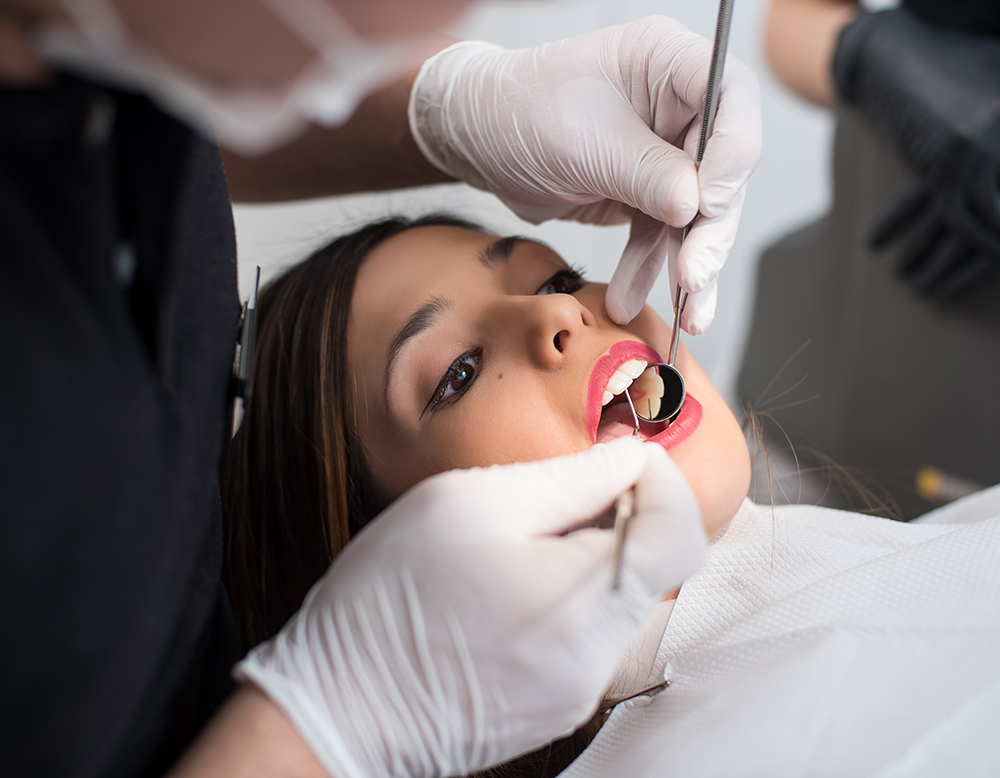Project Description
Aesthetic Dentistry
These are the treatments that enable people to achieve a healthy, aesthetic appearance and improve lost functions with various procedures performed on teeth and gums. Aesthetic dentistry treats tooth decay, eroded teeth, colored teeth (whitening), sensitive teeth, intermittent teeth(diestema), traumatized teeth, broken teeth, teeth with deformities in shape, texture and form, and mild crowding.
For these treatments, composite white fillings (bonding applications), porcelain fillings (inley-onley), fiber applications, whitening methods, laser technology and laminate applications are used.
They are aesthetic procedures performed to change and correct the tooth color, size and form with a composite (white) filling in the restoration of decayed, worn, broken teeth. Bonding applications can also be called dental tissue-friendly procedures since there is minimal loss of material in the dental tissue. The material we use produces satisfactory results at affordable prices for our patients because of the low cost of composite filling and the high choice of colors.
The average duration of use is 5 years, but people who consume too much tea, coffee, and cigarettes have faster coloration than natural teeth.
Good oral hygiene is the most important factor in the care of aesthetic fillings. If an ideal oral hygiene is not achieved, both gum problems occur and teeth may rot. In addition, it is necessary to avoid such foods as hard foods may corrode the composite material. Teeth should not be brushed harshly as abrasion can occur. Another issue is that all coloring foods and beverages such as cigarettes, tea and coffee will cause changes in the color of aesthetic fillings, so attention should be paid to their consumption.
The biggest advantage of aesthetic composite fillers is that they have different color options, they are transparent and they satisfy the patients aesthetically. It is also low cost. If the patient wishes, he/she can have the same tooth filled with aesthetic filler again. It is preferred by patients because minimal treatment is performed on the dental tissue.
Glass-backed reinforced porcelain is used instead of metal infrastructure in empress porcelain crowns. Glass-backed porcelain passes more light. In addition, empress crowns have the ability to reflect near-perfect light. Due to these characteristics, they are close to the natural tooth and are very aesthetic. They are very well matched to the gum tissues. Since it does not contain metal infrastructure, there is no allergy. In addition, since the empress porcelains fit into the tooth with their special adhesives, the tooth does not rot under the porcelain.
Empress full porcelain crowns are used in upper anterior teeth where aesthetics is very important, in premolars that are not exposed to much force, in teeth with discoloration after canal treatment, in antibiotic-colored teeth such as tetracycline, in teeth with discoloration due to excess fluorosis, and in teeth with age-related discoloration, in the closure of intermittent teeth (in the presence of diestama), in teeth with deformity, in order to provide smile aesthetics in teeth with abnormal ranking and posture, in many restoration procedures performed to provide smile aesthetics, in order to achieve an ideal appearance in broken or worn teeth.
Empress porcelain crowns are not preferred in the restoration of teeth with more than one tooth deficiency in the posterior teeth where excessive chewing force occurs.



